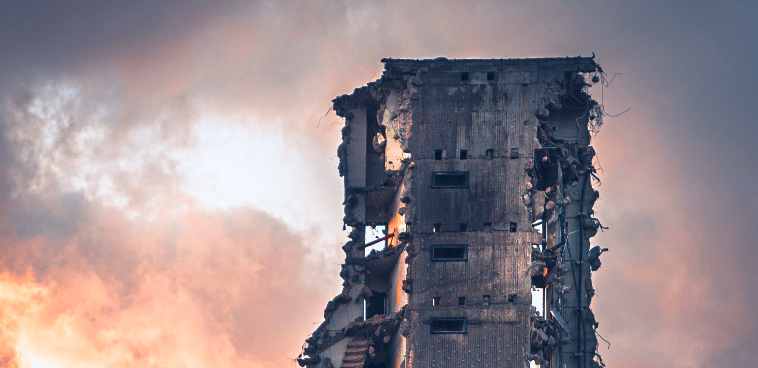Much good has come as a result of creative destruction, the term coined by Joseph Schumpeter to explain the relentless advance of a free economy. In the past 200 years, for example, income and life expectancy have both skyrocketed, with global income per person increasing by a factor of 20 and life expectancy by three decades. That’s the creative part.
But there’s a destructive part, as well: Companies that don’t adapt don’t survive. Economists Steven J. Davis and John Haltiwanger examined one 28-year period (1977-2005) during which overall job growth averaged about 2% annually and found that each year, roughly 15% of all jobs were eliminated. Nearly one in seven jobs wiped out a year. Every year.
How does that work? Simple. Each year, 15% of jobs get destroyed, 17% of jobs get created, netting 2% job growth. The math doesn’t exactly work that way, but it’s pretty close. And that’s in an average year, which 2020 has been anything but.
I find the ocean to be a helpful metaphor here. When you gaze out at the ocean on a bright, sunny day, all you may see is a calm, smooth surface. That’s 2% job growth. But beneath all that apparent tranquility, the cold-blooded dwellers of the deep are busy eating each other. All day, every day.
The corollary is clear: In a world of creative destruction, it’s eat or be eaten.
This year has taken a chunk out of all of our hides. Hundreds of thousands of Americans have lost loved ones. Tens of millions have been furloughed or laid off. Untold businesses have been shuttered.
People whose paychecks are unthreatened are making decisions that affect those whose are, and few of them seem to be considering the unintended consequences of their decisions. And the handful of winners during this year of living less dangerously have tended to be big fish, from Big Tech to Big Retail.
Those of us that have managed to survive have had to innovate like never before. And we’re going to continue to have to, because there’s no telling when this is all going to let up or what the world will look like when it does. Whether it’s a debt crisis, runaway inflation or simply fallout from the moral hazard that results from repeated government interventions paid for with funny money, the private sector is going to have to pull us all out of the abyss.
The trick for any individual company is, as always, to find ways to make creative destruction work for it rather than against it. I call it “creative disruption” — the ability to hold tightly to your organization’s mission but loosely to its model, always being willing to adapt to changing circumstances. And there, advantage goes to the nimble.
James W. Breyer, a former chairman of the National Venture Capital Association who has served on the boards of Facebook, Dell and Wal-Mart, among others, suggests that even the biggest companies that succeed at innovation do so when they act more like small companies. They avoid the traps of being smothered by bureaucracy and the temptation to play defense, instead strategically launching new initiatives without losing focus on their core competency.
Take Apple, Fortune’s Most Admired Company for 13 straight years. Incredibly, 90.4% of what Apple sells didn’t exist when it first topped the Fortune list. The iPhone launched just a few months before the company’s first No. 1 ranking, and the iPad, AirPods, Apple Watch and Apple’s various service offerings weren’t even a glint in Steve Jobs’ eye back then. Apple is a rare example of a company that is willing (and able) to regularly disrupt its own status quo.
The rest of us must do the same. The events of 2020 may have sped up the need for innovation, but the gears of disruption were already grinding ever faster. Five months after the launch of the iPhone, the cover of Forbes featured Nokia with the headline, “One Billion Customers — Can Anyone Catch the Cell Phone King?”
The speed of change may be more pronounced in the tech industry than in others, but creative destruction comes for us all.
That is, unless we decide to disrupt things ourselves, beginning with a mindset that refuses the victim mentality. Whether it’s a global pandemic, a deep recession, a 100-year flood, a transformative technology or any one of a thousand other things that interrupt the best-laid plans, unanticipated setbacks always carry with them unexpected opportunities. Our job is to find and pursue them. If we don’t, they’ll pursue us, likely in someone else’s hands.
Nassim Taleb, author of “The Black Swan,” made the astute observation that this country has benefited “because there’s a high rate of bankruptcy in America.” Indeed it has. But who eats and who gets eaten is never a foregone conclusion. Victims of destruction get destroyed; agents of disruption disrupt. I know which I want to be.
Each month, When Growth Stalls examines why businesses and brands struggle and how they can overcome their obstacles and resume growth. Steve McKee is the co-founder of McKee Wallwork + Co., a marketing advisory firm that specializes in turning around stalled, stuck and stale companies. The company was recognized by Advertising Age as 2015 and 2018 as Southwest Small Agency of the Year. McKee is also the author of “When Growth Stalls” and “Power Branding.”
SmartBrief offers more than 200 free newsletters, including SmartBrief on Leadership and Business Transformation SmartBrief.
